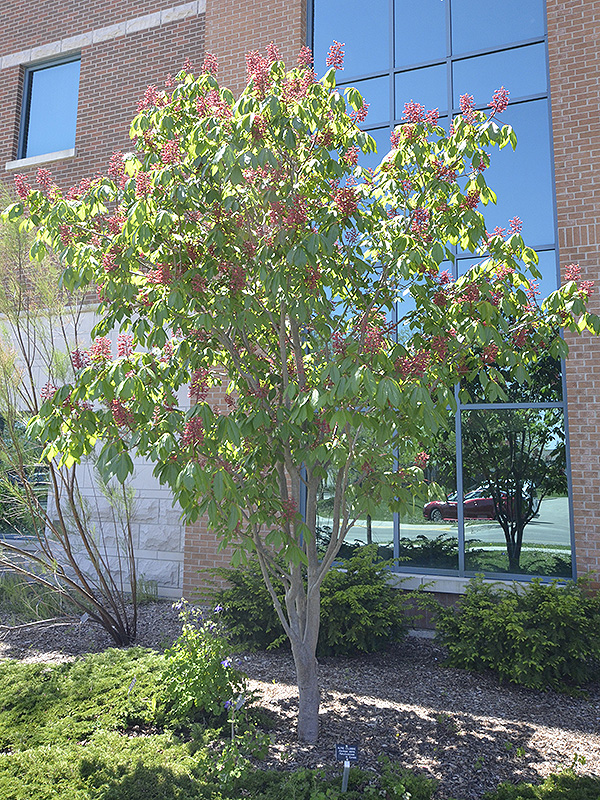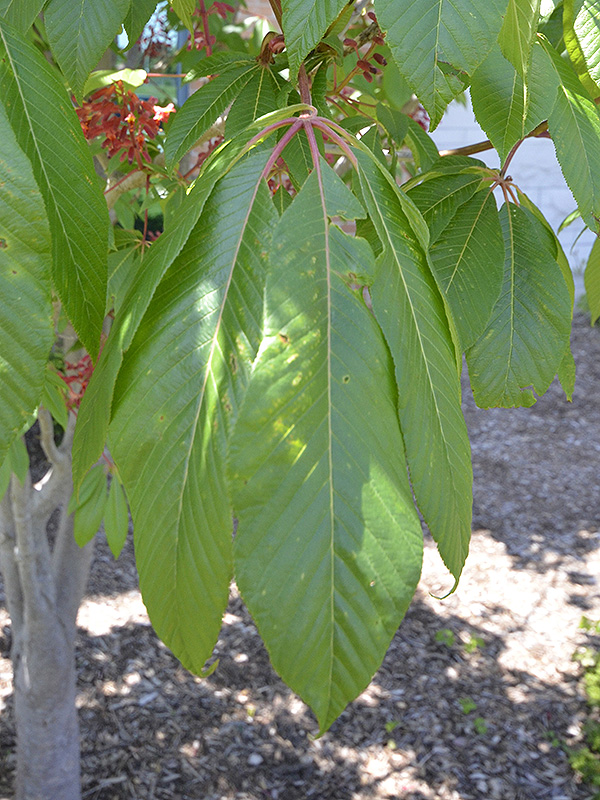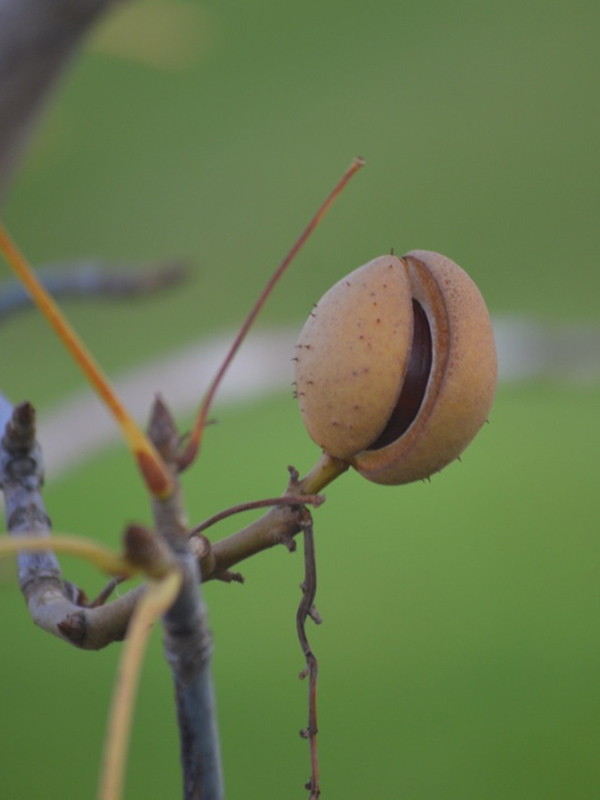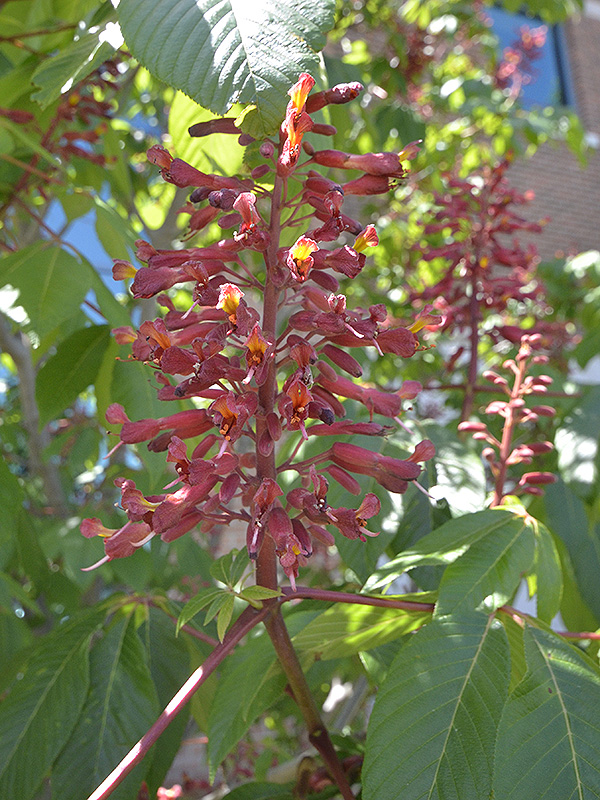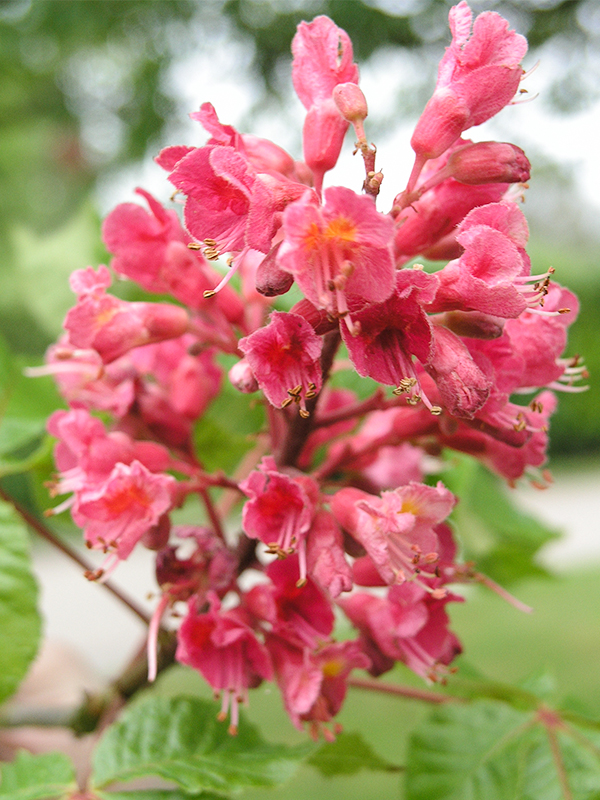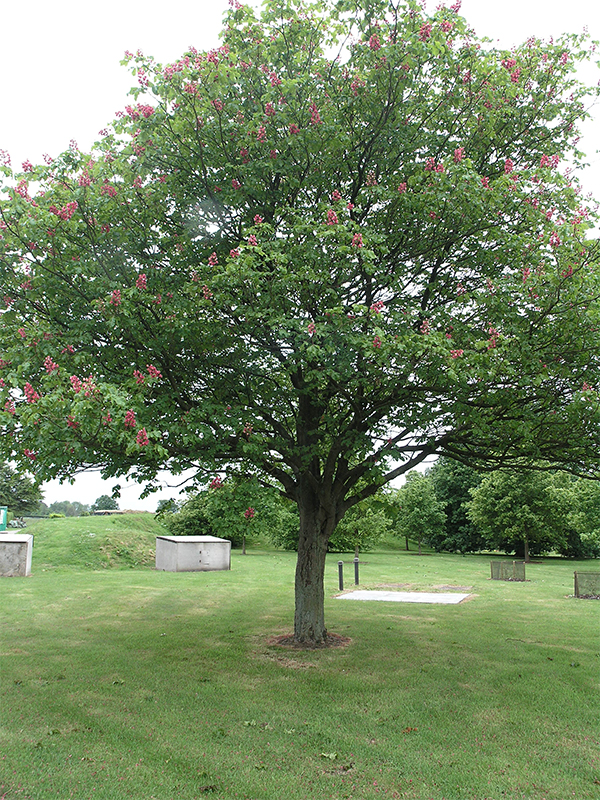| Shape | Multi-stemmed tree, oval and round. |
| Landscape | Landscape specimen. |
| Propagation | Seeding. The seed germinates almost immediately and must be given protection so it is best to sow it immediately upon collection in a cold frame. The seed is recalcitrant and has limited viability and must not be allowed to dry out. It cannot be stored long term (greater than three months). |
| Cultivation | Full sun and partial-shade. Well-drained and medium moisture soils. Prefers fertile soil. |
| Pests | Leaf blotch can be a problem. Powdery mildew and leaf spots may occur. Bagworms, Japanese beetles and borers are troublesome. |
| Notable Specimens | The Gardens of Fanshawe College, London, Ontario, Canada.
Wakehurst Place, Ardingly, Haywards Health, Sussex, England. |
| Flower/Leaf Bud Description | Buds are quite pronounced, globose and scaled. |
| Leaf Description | Palmately compound leaves with 5 spreading ovate-oblong leaflets. Leaflets have doubly-toothed margins.
|
| Flower Description | Showy flowers appear in upright terminal panicles that are 15 - 20 cm long. |
| Fruit Description | Prickly husky capsules that are 3 - 4 cm in diameter and contains 2 - 3 nuts. The nuts are poisonous. |
| Colour Description | The bark is a greyish-beige. The leaves are dark green. Panicle is bright red. The husk is green. |
| Texture Description | The bark is smooth when young and becomes coarse as it matures. The husk is smooth in texture. |
